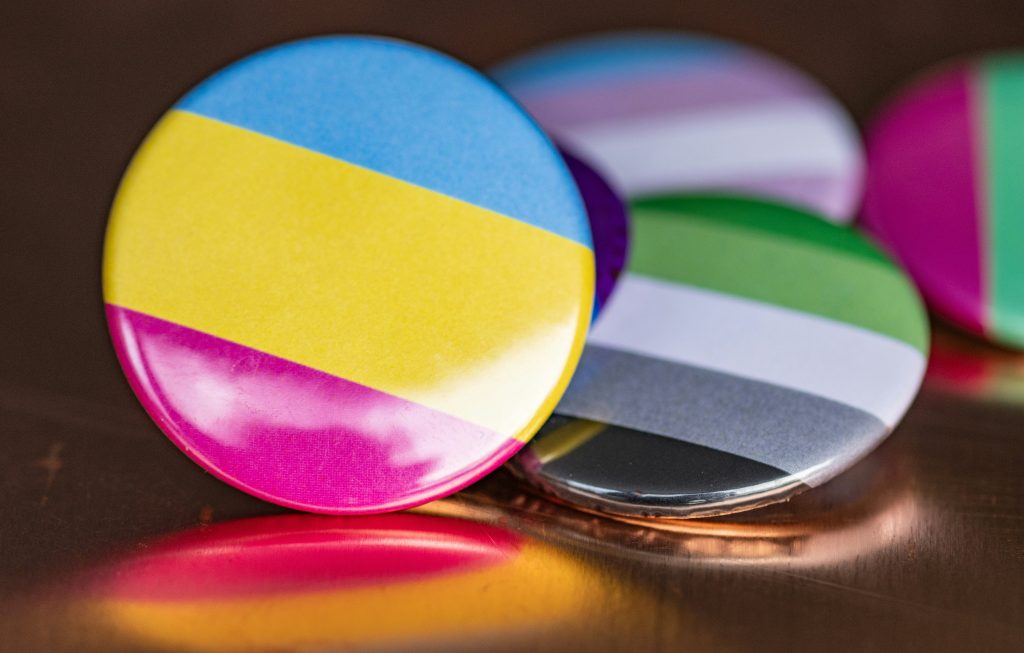In Season 1, Episode 10 of the popular TV show, Schitt’s Creek, featured an iconic dialogue by fan-favourite protagonist David Rose. Describing his pansexuality to another character, he exclaimed:
“I do drink red wine, but I also drink white wine. And I’ve also been known to sample the occasional rosé. And a couple summers back I tried a Merlot that used to be a Chardonnay, which got a bit complicated…I like the wine and not the label. Does that make sense?”
The portrayal of David’s sexuality on the show, and this moment in particular, was appreciated by many pansexual individuals who often faced rampant misconceptions about their identity.
So what really is Pansexuality?
Pansexuality is the romantic and/or sexual attraction to people irrespective of their gender identity.
Let’s bust some of these common myths about pansexuality and clear the air once and for all!
Myth 1: Pansexual people are either indecisive or greedy
One of the first things that pansexual people get asked upon revealing their identities is, “are you sure you’re not just confused?” Escaping watertight conventions of heteronormativity, i.e considering hetereosexuality as the default, is key to comprehending the fluidity of pansexuality. Another stereotype that pansexual individuals are frequently forced to contend with are presumptions of greediness or even promiscuity. It is essential to stress here that even though gender is not a factor of pansexual individuals, they are not inherently attracted to any and all people that they meet, just like everyone in the world .
Myth 2: Pansexuality and bisexuality are the same
Let’s not be misguided. There are certain overlaps between pansexuality and bisexuality because that is usual when we realise that sexuality does not exist in binaries. But there are some clear departures. The Greek prefix of “pan” meaning “all”, is perhaps the most crucial. This signifies that pansexual individuals can be attracted to people regardless of their gender identity. Bisexuality on the other hand means attraction to more than one gender. However, unlike pansexuality, bisexual individuals do not consider themselves to be completely “gender blind”.
Myth 3: Pansexual people are attracted to everything under the sun
Microaggressions and offensive humour unfortunately have a prominent presence in the lives of LGBTQIA+ individuals. This is no different for pansexual people. Some of these jokes equate their attraction to all genders and sexes to everything under the sun, including pots and pans. One may say that this is merely a poorly constructed pun and nothing serious, but such jokes have a harmful impact on members of the community. Such jokes may signal invalidation of the pansexual identity and reduction of the human experiences that accompany being an individual from the group.
Myth 4: Pansexuality is a modern phenomenon
Like much of the LGBTQIA+ community, pansexuality is also frequently viewed as a product of modernity. But pansexuality actually has a rich and long historical precedence. The term “pan-sexualism” appeared in the Oxford English Dictionary as early as 1914, with its first users being the likes of Sigmund Freud and J. Victor Haberman. Several reports from New York’s Harlem district and Chicago’s South Side during the 1920s and 30s mentioned people who “loved across borders and labels”. George Chauncey wrote in this book, Gay New York wrote about the presence of “men who were interested in sexual activity defined not by the gender of their partner” in 1930’s America. In 1982, People Magazine wrote a piece on novelist and activist Rita Mae Brown who recounted her experiences as a pansexual person, including being removed from university for “being open to loving anybody”. One thing that is modern, however, is the strengthening mission for self-expression and belonging among the pansexual community.


